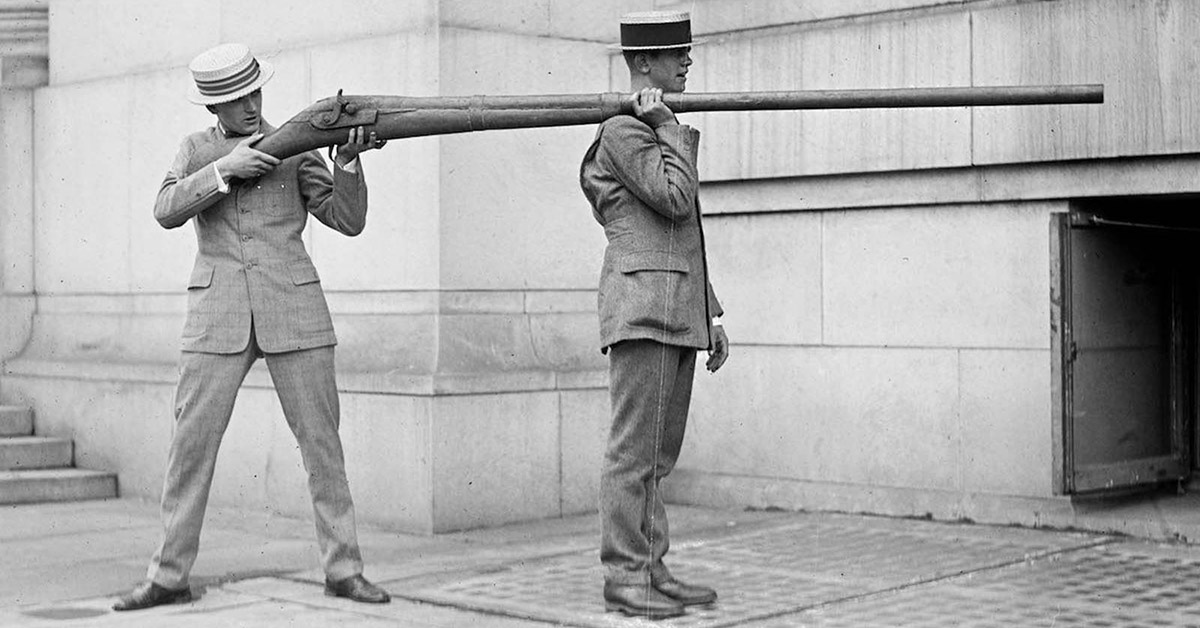Leadership
The government is us; we are the government, you and I. -Theodore Roosevelt
The Punt Gun and the Race to Save America’s Wildlife
How did a 10-foot long gun blasting two pounds of shot decimate (then help save) America’s waterfowl?
By PJ DelHommeAs the poster-child of waterfowl market hunting of the 1800s, the punt gun was a 10-foot long, 100-pound muzzleloading shotgun that might be better categorized as artillery. This gun was typically mounted to the bow of a small boat (or punt), aimed at a mass of migratory waterfowl and then, with the single pull of a trigger, it could annihilate 50-100 birds.
Used in the 1800s and early 1900s, these guns were an efficient and economical way to feed the needs of a nation. Because of that demand—and the market hunters hellbent on meeting it—waterfowl numbers in the U.S. plummeted at the turn of the 20th century.
Many states had outlawed the use of punt guns by the 1860s, but it wasn’t working. Legislatively, there was a divided front as some states still allowed their use. Because migratory waterfowl are, well, migratory, it was tough to protect them across their entire flyway from market hunters.
At the turn of the 20th century, federal law was desperately needed not just for waterfowl, but for all of the nation’s wildlife, including egrets that were sought for their feathers to adorn ladies’ hats of the day. On land, bison, elk and deer populations (along with just about anything else that moved) were nearing extinction.
Keen sportsmen, many of whom were members of the Boone and Crockett Club, knew that if something wasn’t done to protect all of the nation’s wildlife, waterfowl included, little would be left for future generations. Club members like Congressman John F. Lacey began to speak up.
Lacey served in the Union during the Civil War and was an early member of the Boone and Crockett Club. He, along with other members, worked to pass the Lacey Act in 1900, which became the legal cornerstone of fish and wildlife conservation. In essence, it sought to limit market hunting by outlawing the transport of illegally taken game across state lines. However, in the early 20th century, the Act was ineffective in stopping interstate shipments, largely because of the huge profits enjoyed by the market hunters and the lack of officers to enforce the law. The early failures of the Lacey Act led to passage of the Weeks-McLean Law.
In 1913, the Weeks-McLean Law was pushed through Congress with the help of Congressman and Club member John W. Weeks. This was the first U.S. law that regulated the shooting of migratory birds and the first attempt to put migratory birds under federal jurisdiction. But the Weeks-McLean Law rested on weak constitutional grounds, having passed as a rider to an appropriations bill for the Department of Agriculture.
Finally, in 1918, the Club helped ratify the Migratory Bird Treaty Act (MBTA) with Great Britain (Canada) to establish federal control over hunting of migratory birds. This Act replaced the Weeks-McLean law and decreed that all migratory birds and their parts (including eggs, nests, and feathers) were fully protected. Instrumental in initiating this included Club members Congressman George Shiras III, John Bird Burnham, Ed. W. Nelson, T.S. Palmer, William T. Hornaday, Madison Grant, Dr. Henry Fairfield Osborn, T. Gilbert Pearson, George Bird Grinnell, Charles S. Davidson, Congressman John W. Weeks, and Elihu Root.
Did two decades of pushing legislation through Congress help waterfowl populations? Hard numbers are tough to come by, but we do know that legislation helped lay the conservation groundwork for our nation’s wildlife populations to recover. For conservation to actually work, it takes more than just new laws. It takes funding and habitat. Members of the Boone and Crockett Club were up to the task—even before these laws hit the books.
In 1903, California Senator and Club member George C. Perkins used research provided by the Boone and Crockett Club to help push the National Wildlife Refuge System Act Legislation through Congress. Key Club members involved were Alden Sampson, Dr. Ed W. Nelson, and U.S. Senator George C. Perkins. Refuge lands were specifically set aside to help certain wildlife populations recover.
Then in 1927, Club members created the American Wild Fowlers, which eventually turned into Ducks Unlimited in 1937. During that same time frame, major funding for waterfowl came with the Migratory Bird Hunting Stamp Act. Club member and Connecticut Senator Frederic C. Walcott successfully pushed the "Duck Stamp Bill" through Congress.
So I ask again: did these laws help save America’s wildlife resource? Consider this 1941 press release from the Fish and Wildlife Service, which features a first-hand account from Captain Theodore Johnson, a turn of the 20th century market waterfowl hunter. “The old-time market hunter from Louisiana knew what he was talking about,” states the release. “He killed and sold about 10,000 wild game birds each season between 1902 and 1911 and was considered one of the most successful market hunters in the bayous and swamps of the Mississippi delta.”
Johnson himself gave credit to new federal regulations for boosting waterfowl populations. “It’s a darn good thing the Federal Government started regulatin’ the bag limits and seasons, or else there wouldn’t be many ducks and geese left to look at today.”
I’d say the laws did indeed work—and still work to this day.
PJ DelHomme writes and edits content in western Montana. He runs Crazy Canyon Media and Crazy Canyon Journal.
Support Conservation
Support Hunting
Support Conservation
Support Education
"The wildlife and its habitat cannot speak. So we must and we will."
-Theodore Roosevelt




